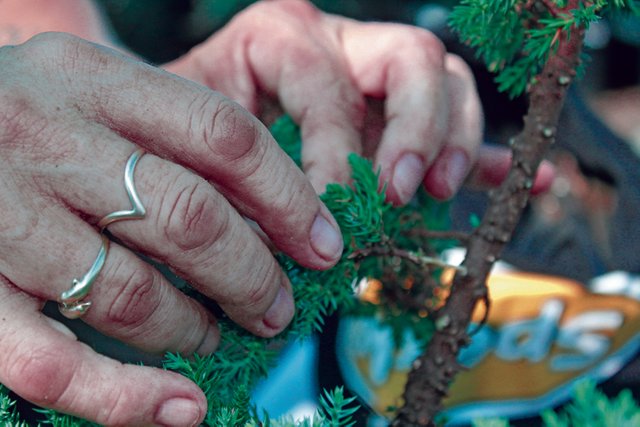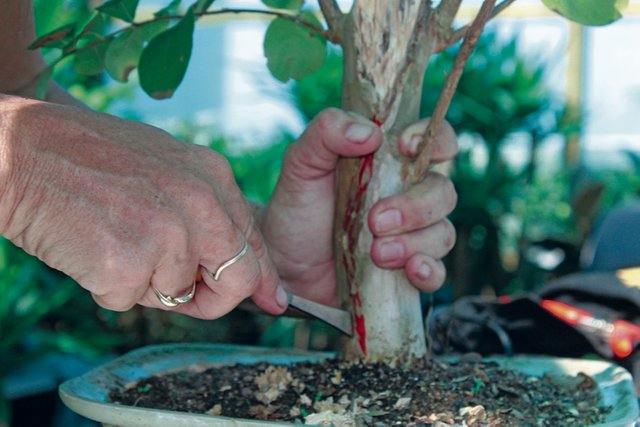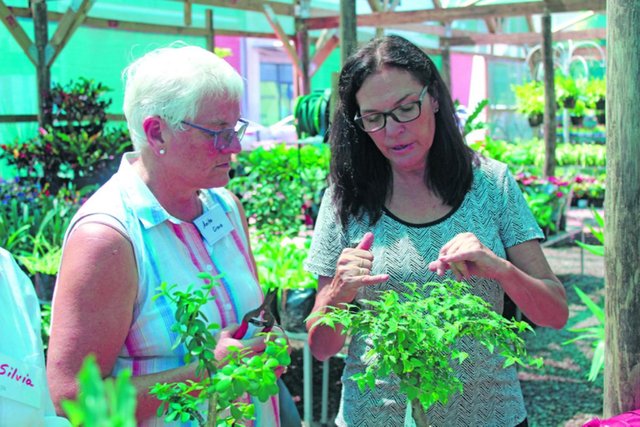The art of bonsai; Age is an illusion

(Image Caption: Dr Caroll Hermann carefully works on a Juniperus Procumbens Nana, clearing it of unnecessary growth before applying a piece of dead wood to the main trunk, tricking people into making the bonsai appear older than it is.)
It is said that the Japanese are owed great thanks for introducing the world to the ancient art of bonsai.
However the practice of reducing trees to miniature scale actually originated in China and was only later copied and adapted by the Japanese who then coined the term ‘bonsai’.
The original practice dates back more than 2 000 years.
Many a bonsai expert or even an enthusiast will be able to tell you: ‘The art of bonsai is all about manipulation’.
Countless bonsai have gone up for offer with price tags exceeding the thousands, some even well into the hundreds of thousands with the most expensive bonsai ever sold recorded at just under R20 million.
But what makes a bonsai so valuable? Is it just merely it’s age?
The time put into what is essentially a tree in a pot?
Although these factors add value, it is also the visual aesthetic appearance of the bonsai, how much it resembles the visual aspect of how the tree would naturally look, the wear and tear a tree would normally undergo and, even the pot.
With this in mind, it is easy to understand why so many people delve into the ancient art form but also, why so many so quickly lose interest when their bonsai show no visual growth.
Ballito Bonsai Club’s Dr Caroll Hermann, a clinical psychologist by profession said bonsai require patience.

(Image Caption: Carving, as demonstrated by Dr Caroll Hermann, is another method used to add a sense of age to a tree, or even hide mistakes.)
“It is important to remember that because these trees are growing in pots, they will grow substantially slower,” said Dr Hermann.
But with this also in mind, we come to the ‘illusion of bonsai’ – tricks of the trade, and ancient techniques used to deceive, or even mimic natural ‘wear and tear’ one would often see in nature.
A popular method is known as ‘Tanuki’.
Although considered cheating, the practice adds ‘years’ of age to the bonsai, making it look very old and weathered.
The practice involves grafting a piece of dead wood (or drift wood) onto a living tree.
Some trees, such as the Natal Fig, will eventually form roots around the Tanuki, further adding a visual appeal.

(Image Caption: A piece of dead wood which has been grafted onto a bonsai. [Credit Unknown].)
Other techniques include the practice of Shari and Jin. Jin is the art of removing bark or stripping bark from a trunk to create a truly characteristic look and feel, making any young tree look as though it has withstood the test of time.
Although not suitable for any kind of tree, a test subject used by Dr Hermann for the purpose included a Juniper Procumbens Nana, a very common and widely used species of shrub, native to Southern Japan.
In order to apply Jin, one would have to strip the bark from a branch of the plant – in nature, this may happen to a tree that has been exposed to lightning.

(Image Caption: Anita Greve (left) gets some styling advice from Dr Caroll Hermann.)
Shari is the practice of removing bark from the trunk of a tree, also done similarly however paying special attention to preserving the veins of the tree.
DISCLAIMER: This is reproduced content created by myself, originally published in The North Coast Courier, a South African newspaper based in the province of KwaZulu-Natal, in the North Coast town of Ballito. I, the author of this content, am employed as a Journalist at the said newspaper. The photos used in this content is also my own, unless stated otherwise.